
Google Analytics for Beginners (Updated Guide 2025)
Are you Confused about how to begin with Google Analytics? This guide is designed specifically for beginners and provides a clear introduction to Google Analytics and its powerful capabilities.
We’ll walk you through this Google Analytics for Beginners guide, which includes the basics of setting up your account, understanding the Google Analytics interface, and exploring essential reports. With easy-to-follow steps and clear explanations, you’ll quickly grasp what does Google Analytics do and how to use it.
Get ready to learn about Google Analytics Basics with ease!
Google Analytics for Beginners (TOC):
What is Google Analytics?
Google Analytics is a powerful web analytics tool offered by Google that tracks and reports website traffic. It helps to understand how users interact with their website, delivering valuable information about user behavior, traffic sources, and overall website performance.
Universal Analytics (UA) is the previous version of Google Analytics. It was designed around session-based tracking, which measured user activity within set timeframes and was primarily focused on websites. However, UA’s limitations became apparent with the rise of multi-platform user journeys (web, mobile apps, etc.).
In response, Google introduced Google Analytics 4 (GA4), a significant evolution from UA. GA4 is built on an event-based model, enabling more detailed tracking of user interactions across different platforms, devices, and channels.
To make GA4 even more accessible, Analytify seamlessly integrates with GA4, offering an easy-to-use interface for WordPress users. It simplifies data analysis, allowing you to view your analytics directly from your dashboard without any technical complexity.
Join 50,000+ beginners & professionals who use Analytify to simplify their Google Analytics!
Key Benefits of Using Google Analytics
Here are some of the key benefits of using Google Analytics:
- Comprehensive User Behavior Tracking
Google Analytics for Beginners offers a detailed understanding of how users interact with your website or app. It tracks key metrics like page views, bounce rates, session duration, and conversions, enabling you to pinpoint what content resonates with your audience and identify areas for improvement. - Analyze Traffic Source
After learning about Google Analytics basics, you can analyze your website traffic—whether through organic search, social media, email campaigns, or paid ads. This will allow you to identify the most effective channels and allocate marketing resources accordingly. - Conversion Tracking
Using the features in Google Analytics guidelines, you can set up goals and track conversions such as purchases, sign-ups, or downloads. This helps measure the success of marketing efforts. - Audience Segmentation
Through Google Analytics Tutorial, powerful segmentation tools allow you to group users based on factors like demographics, device, geographic location, and behavior patterns. This feature enables you to refine your strategies to effectively target specific audience segments. - SEO and Content Optimization
Google Analytics tracks which keywords, landing pages, and content drive traffic to your site. This data helps you to analyze SEO strategy, identify high-performing content, and improve underperforming pages. - Customizable Reports and Dashboards
Understanding Google Analytics allows you to create custom reports and dashboards according to your specific needs. It enables quick access to the most important metrics. - Real-Time Data Monitoring
With real-time tracking, you can see how visitors interact with your website at any moment. This feature is useful for monitoring traffic spikes during campaigns or events and quickly addressing any issues. - Cost-Effective
Google Analytics is free for most websites, offering a wealth of data and functionality without expensive subscriptions. Google Analytics for beginners is very budget friendly. - Integration with Other Google Tools
Seamless integration with Google Ads, Search Console, and other Google tools enhances your ability to measure the effectiveness of your campaigns, optimize advertising spend, and track SEO performance.
For WordPress users, integrating Google Analytics is easier with plugins like Analytify. This plugin offers a simplified dashboard directly within your WordPress interface. It provides all the key features of GA4 without the complexity, making data tracking effortless.
How to Use Google Analytics 4 (Step-by-Step Guide)
Google Analytics 4 (GA4) offers powerful tools to monitor site traffic, user behavior, and other critical metrics. By setting up an account and installing the GA4 tracking code, you’ll be able to gather meaningful information that can help optimize your site.
The first step in using Google Analytics is creating an account. It allows you to gather valuable information about how visitors interact with your website. By following Google Analytics guidelines, you’ll gain a deeper understanding of how to make the most of this powerful tool, helping you in understanding Google Analytics like never before.
Step 1: Creating a Google Analytics Account
Setting up an account is a simple process and serves as the foundation for tracking and analyzing your website’s performance.
- Sign in to Google Analytics: Go to Google Analytics and sign in using your Google account. If you don’t have one, you must create a Google account first.
For a detailed guide, visit this article: How to Login to Google Analytics.
- Set Up a New Account: Once logged in, click the Start Measuring button to begin the account creation process.
Check out our article here for a detailed guide on setting up a Google Analytics account.
Step 2: Install GA4 Tracking Code
After setting up your account, the next step is installing the GA4 tracking code on your website to collect data. There are two ways to do this: using a plugin called Analytify or manually adding code to your website.
Follow our comprehensive guide to complete the setup process, integrate tracking code, and start tracking your website data: How to add Google Analytics to a wordpress site.
Step 3: Verify and Confirm
Once the tracking code is installed, go back to Google Analytics and check the Real-Time report to ensure data is being collected. This confirms that your setup is working correctly.
Step 4: Explore and Configure
Explore the various features and settings in Google Analytics to tailor the platform to your needs. Set up conversions, customize reports, and integrate with other tools like Google Ads for enhanced tracking.
Note: In the upcoming section, we will cover the Google Analytics interface in detail, providing you with a comprehensive guide to navigate and utilize its features effectively.
Set up Key Events/Conversions
You can now designate any event you want to track as a conversion in Google Analytics. This means that whenever someone completes a selected action, like downloading a file or submitting a form, it will be recorded as a conversion. In Google Analytics 4, these conversions are called “key events.”
To set this up, go to the “Admin” section and click “Events.” From there, you can toggle the switch to mark an event as a key event, effectively counting it as a conversion.
By following these steps, you’ll have a Google Analytics account up and running, ready to provide a valuable understanding of your website’s performance.
A Beginner’s Guide to the GA4 Interface
Google Analytics 4 (GA4) is a significant update to Google’s web analytics platform, designed to provide a more comprehensive and accurate view of user behavior. The GA4 interface is structured to allow users access essential data and reports. Here are the key components:
Key Components of the GA4 Interface:
There are the following two key components of the GA4 interface:
1) Navigation Menu:
It is located on the left side of the screen. This menu provides access to the main sections of GA4, including:
- Home: This section summarizes your website’s performance.
- Reports: This section offers pre-built reports and the ability to create custom reports. It includes subcategories like:
- Real-time
- Business Objectives (Leads, Sales, Traffic)
- Lifecycle (Acquisition, Monetization, Engagement, Retention)
- Users (User Attributes, Tech)
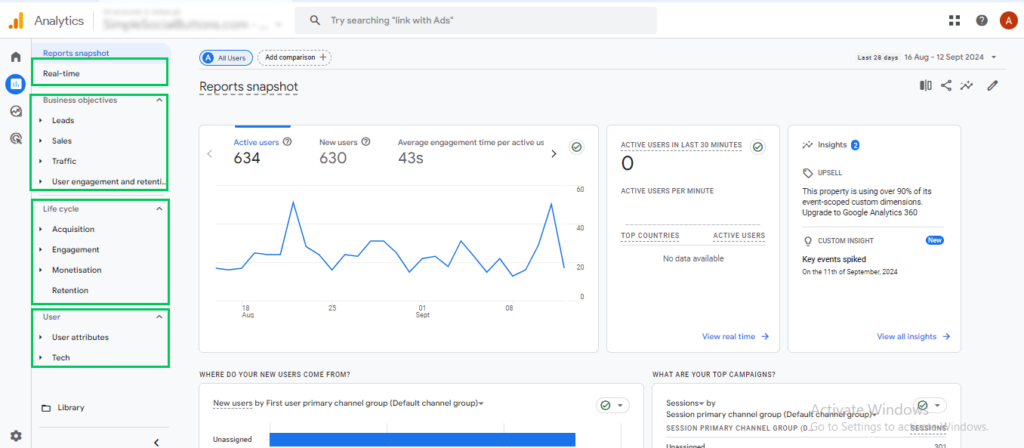
- Explore: The Explore section allows you to create custom reports for deeper analysis. It offers features like funnel exploration, path analysis, and segment comparisons, allowing you to analyze data in ways that suit your needs.
- Advertising: This section helps you assess the success of your marketing campaigns by tracking user acquisition through ads and measuring ROI across various marketing channels.
- Admin: The Admin panel manages account settings, property configurations, and integrations with other Google products, such as Google Search Console. It also controls data settings and user permissions.
2) Dashboard:
The central area of the interface displays a dashboard with key metrics and visualizations.
Important Reports of GA4
GA4, as a reporting tool, offers several reports that are crucial for understanding user behavior and performance, such as:
Real-Time Report:
The Real-Time Report in GA4 provides an immediate view of current user activity on your site or app. It allows you to monitor live interactions, including:
- Active Users: See how many users are on your site or app at this moment.
- Current Events: Track the specific actions users are taking in real-time, such as page views, button clicks, or transactions.
- Traffic Sources: Identify where current users come from, whether through direct visits, search engines, or referral links.
- Geographic Locations: View the geographical distribution of your current users.
This report helps you quickly gauge the performance of ongoing campaigns, detect sudden spikes or drops in traffic, and understand user behavior as it happens.
If you encounter issues with the Real-Time Report not working correctly, this guide offers solutions: How to Fix Google Analytics Real-Time Not Working?
Acquisition Report
The Acquisition Report in GA4 explains how users find and arrive at your site or app. It details various traffic sources and the effectiveness of different marketing efforts. It helps analyze the performance of other channels and campaigns in driving traffic and user engagement.
- Traffic Acquisition Report: The Traffic Acquisition Report focuses on the sources and channels through which traffic (new & returning users) arrives at your site.
- User Acquisition Report: This specifically looks at how new users discover your site and their characteristics.
There are the following sources/medium through which traffic arrives:
- Organic Search: Traffic coming from unpaid search engine results.
- Paid Search: Traffic from paid search ads (e.g., Google Ads).
- Social: Traffic from social media platforms (e.g., Facebook, Twitter).
- Direct: Traffic from users directly entering your URL or using bookmarks.
- Referral: Traffic from other websites linking to your site.
- Email: Traffic from email marketing campaigns.
However, some traffic may appear unassigned in GA4, meaning the traffic source or medium isn’t identified. This guide provides more details on resolving this issue: How to fix unassigned traffic in GA4?
When analyzing your website acquisition report, it’s essential to focus on key metrics such as session, new user, returning user, total users, Average Session Duration, bounce rate, pages per session, key events, engaged session, and conversion rate.
Engagement reports:
The Engagement Report in GA4 provides knowledge about how users interact with your website or app. It tracks crucial metrics that help you understand user behavior and the quality of their interactions. This report focuses on:
- Engaged Sessions: The number of sessions where users actively engaged with your content (e.g., clicking, scrolling, or spending more time on pages).
- Engagement Rate: A percentage showing how many sessions were considered engaged versus total sessions.
- Average Engagement Time: The average time users spend interacting with your content during a session.
The Engagement Report is critical for understanding how effectively your content resonates with users and whether they engage meaningfully.
Pages and Screen Report
The Page and Screen Report tracks user interactions with specific pages (for websites) or screens (for apps). It provides details about:
- Top Pages/Screens: Shows the most visited pages or screens, helping you identify which content attracts the most attention.
- Page Views/Screen Views: Tracks how many times each page or screen is viewed.
- Average Engagement Time per Page/Screen: This measures the average time users spend engaging with each page or screen.
This report is useful for identifying high-performing content and optimizing user experience on both web and mobile platforms.
Landing Page Report
The Landing Page Report focuses on the first page a user interacts with when arriving at your site. It shows:
- Top Landing Pages: Highlights the pages where users first enter your site, helping you understand which pages attract the most traffic.
- Engagement Metrics: Tracks bounce rate, engagement time, and conversions for each landing page.
This report helps optimize users’ first impressions of your site and ensures that landing pages perform effectively.
Events Report
The Event Report in GA4 provides detailed information on user actions on your site or app. Events can be anything from clicking a button, submitting a form, or playing a video. It analyzes:
- Event Count: The total number of times specific events occurred.
- Top Events: Highlights your site or app’s most frequently triggered events.
- Event Parameters: Allows you to analyze additional details about each event, such as the transaction’s value or the event’s category.
The Events Report in GA4 tracks both custom events, which are based on specific user interactions, and recommended events, which Google predefined for common actions like purchases or form submissions.
Using DebugView, you can ensure that the events appearing in the Event Report are accurately set up. If you encounter any issues with DebugView, check this guide: How to Fix GA4 Debug View Not Working? (2024)
Monetization Report
The Monetization Report in GA4 provides insights into revenue-related activities on your website or app. It tracks how users contribute to your business’s income, including purchases, subscriptions, in-app purchases, and revenue.
This report helps businesses understand which products or services generate the most revenue and optimize their strategies to increase profitability.
- Ecommerce Purchases Report: Tracks revenue generated through product purchases, including product performance and transaction details.
- In-App Purchases Report: Measures revenue from purchases made within mobile apps.
- Transaction Report: The Transaction Report in GA4 tracks total revenue, transaction count, and product performance.
- Promotion Report: The Promotion Report measures the effectiveness of promotions through impressions, clicks, and conversion rates.
Ecommerce metrics in GA4 track key performance indicators such as Revenue, Purchases, Average Purchase Value, Conversion Rate, Product Performance, Cart-to-View Rate, and Refunds.
These metrics provide details into sales performance, customer spending, product success, and the effectiveness of your sales funnel, helping businesses optimize their monetization strategies.
Google Search Console Report
The Google Search Console Report in Google Analytics provides knowledge about how your website performs in Google Search results. This report helps you understand how users find your website through organic search and how your pages rank in search results.
A Google Search Console report analyzes your website’s search engine performance through metrics such as impressions, clicks, click-through rate (CTR), average position, search queries, landing pages, etc.
Most common issues of GA4 and their Solutions
Some of the most common troubleshooting in GA4 and their related fix guides include:
- Duplicate Events: Duplicate event tracking issues can be resolved by following this fixing GA4 duplicate events guide.
- DebugView Not Working: If you’re having trouble with real-time event monitoring, see how to fix if debugview is not working.
- Unassigned Traffic: When traffic sources are labeled as “unassigned,” refer to this guide to fix unassigned traffic in GA4.
- Custom Events Not Showing Up: Try this guide if custom events are not appearing in your reports.
- Google Analytics Not Working: General issues with GA4 can be addressed and resolved by taking help from How to fix if Google Analytics not working guide.
- Not Set Values: Resolve issues with “not set” values in your reports by following this guide.
- Real-Time Data Issues: Refer to this guide if your real-time reports are not working correctly.
These guides provide detailed solutions to common GA4 issues, ensuring your analytics run smoothly.
Analytify Makes Google Analytics Easier
Analytify simplifies Google Analytics 4 (GA4) by providing an accessible and intuitive interface, especially for WordPress users. Instead of dealing with GA4’s complex setup, Analytify organizes key reports like Real-Time, Acquisition, Engagement, and Ecommerce into easy-to-use dashboards directly in your WordPress. You no longer need to navigate GA4’s separate platform to access essential metrics.
Join 50,000+ beginners & professionals who use Analytify to simplify their Google Analytics!
Install Analytify Plugin for GA4
For the WordPress crowd, Analytify streamlines the entire process. No coding is required; just a few clicks and Google Analytics is running. Analytify is a popular WordPress plugin that simplifies the installation process for GA4.
Here’s how to do it:
- Navigate to WordPress Dashboard >> Plugins >> Add New.
- Search Analytify and install the plugin.
- Once the plugin is installed, go to Plugins >> Analytify and click on the Settings tab.
- Follow the instructions on the Settings tab to connect Analytify to your GA4 property.
For more details, read How to Integrate Google Analytics 4 with Analytify.
Reports Covered by Analytify:
Here’s how Analytify simplifies GA4:
Overview Report:
The Overview Dashboard in Analytify provides a comprehensive snapshot of your site’s performance. It presents
- User Details: This section displays detailed visitors and views for months and years.
- General Statistics: This section displays key metrics, including bounce rate, engaged sessions, total sessions, page per session, visitors, and new vs. returning users, giving a clear view of user activity and interaction levels on your site. It also shows traffic distribution across mobile, tablet, and desktop devices, helping you optimize your site for the most popular platforms.
- Geographic Details: This provides insights into your visitors’ locations, allowing you to tailor your content to different regions.
- Referral Reports: These reports track where your traffic is coming from, such as search engines, social media, or direct visits, making it easier to identify your top traffic sources.
- Top Pages by Views: Lists your most popular pages based on user views, giving you an understanding of which content drives the most engagement.
- System Stats: Provides information on user operating systems and browsers, enabling you to ensure compatibility and performance across different platforms.
- 404 Error Report: This report identifies pages that return a 404 error (Page Not Found), allowing you to track the URL, referrer, and user sessions to fix broken links and improve the user experience.
Real-Time Reports:
The Real-Time Report in Analytify shows the number of active visitors on your site, including a breakdown of users by device type, such as mobile, tablet, and desktop. This helps you monitor which platforms visitors use to access your site in real-time.
- Email Notification Addon
Stay informed with real-time updates via email notifications on your website’s performance due to the Email notification add-on. This feature keeps you updated on critical metrics without constantly logging in, enhancing the auditing process.
Acquisition Reports:
Tracks how users find your site, detailing traffic sources, campaigns, and mediums in a simplified format.
- Campaign Tracking with Analytify UTM Tracking Addon: Easily track the performance of your marketing campaigns by adding UTM parameters to URLs. The UTM Tracking Addon in Analytify helps you monitor and analyze the success of each campaign within your reports.
- Goal Tracking with Analytify Goal Tracking Addon: Set and monitor specific goals such as form submissions, product purchases, or newsletter signups. The Goal Tracking Addon simplifies the process of setting and tracking conversions, helping you measure success directly from your WordPress dashboard.
Monetization Reports:
Analytify provides a detailed understanding of your site’s revenue and ecommerce performance, allowing you to track key financial metrics. These reports help you understand how your products and services are performing.
- Ecommerce Tracking
For e-commerce websites, the WooCommerce add-on provides seamless integration, allowing you to track revenue, product performance, and transactions effortlessly. Analytify displays these metrics, making tracking their sales easier for online stores.
Engagement Reports:
In Analytify, these reports give you a deeper understanding of user interactions. It helps you understand user actions, allowing you to pinpoint which content drives engagement:
- Demographic Reports: These reports offer details about user age, gender, and interests, helping you create more targeted content and campaigns.
- Search Term Reports: Tracks the search queries users enter on your site, providing valuable information on what users are looking for, which can guide content optimization.
- Custom Dimensions Reports: This option allows tracking unique business-specific metrics, such as user roles or content categories, providing a more tailored understanding of user behavior.
Conversions Reports:
Analytify provides a valuable understanding of users’ actions on your site, helping you measure the effectiveness of your goals and marketing strategies.
- Forms Tracking in WordPress: Easily track form submissions, including contact forms, sign-ups, and surveys. The Form Tracking Addon helps you monitor conversions and evaluate the performance of various forms on your site.
- Events Tracking in WordPress: Use the Event Tracking Addon to track user interactions such as clicks, downloads, or video plays. It lets you set up and measure custom events, giving detailed information about specific user actions.
By integrating these GA4 reports and features, Analytify eliminates the complexity of data analysis, making Google Analytics easier and more efficient for users.
Google Analytics 4 Glossary
For a deeper understanding of GA4 terminology and concepts, check out our GA4 Glossary to learn about basic terms and their definitions.
Final Thoughts: Google Analytics Beginners Guide
In conclusion, Google Analytics, especially the advanced features of GA4, can significantly enhance your ability to track, analyze, and optimize your website’s performance. Beginner guide to Google Analytics has walked you through the essentials of setting up and using Google Analytics, from creating an account to understanding key reports.
With the integration of Analytify, GA4 becomes even more accessible, especially for WordPress users. Analytify streamlines setting up and viewing key reports, offering a simplified interface for tracking user activity, campaign performance, and revenue metrics directly from the WordPress dashboard.
To further deepen your knowledge and refine your analytics skills, check out the articles Top 10 Google Analytics Tips and Tricks (2024) and Google Analytics Top Selling Products. These resources offer actionable tips to help you get the most out of your Google Analytics.
We’d love to hear from you! Share your thoughts, questions, or tips about Google Analytics. What challenges have you faced? Let’s discuss this in the comments below!

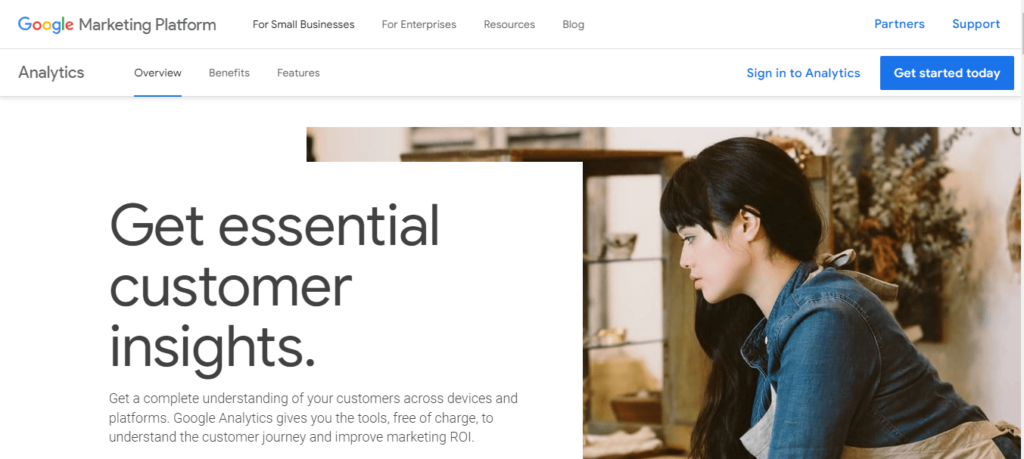
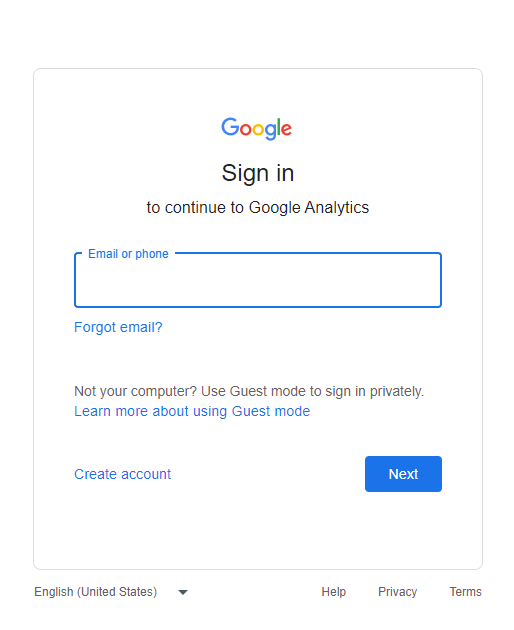
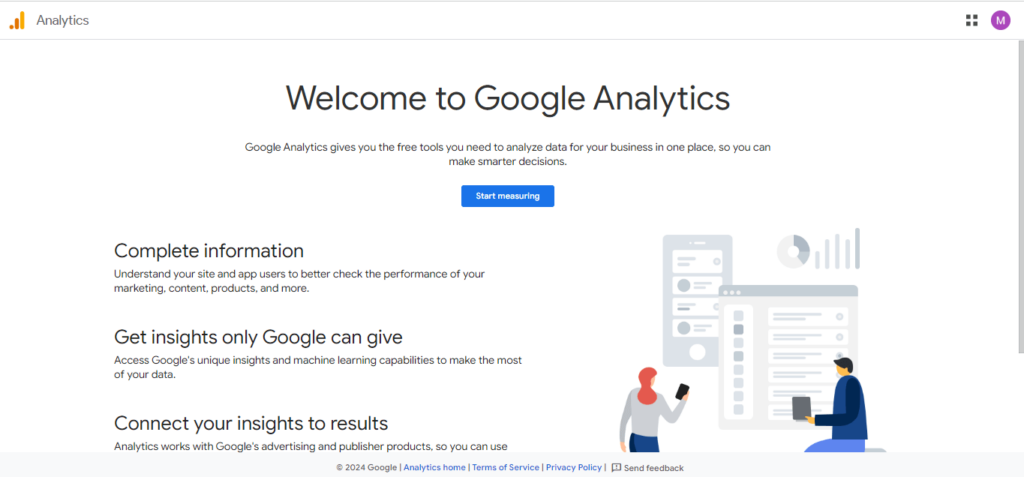




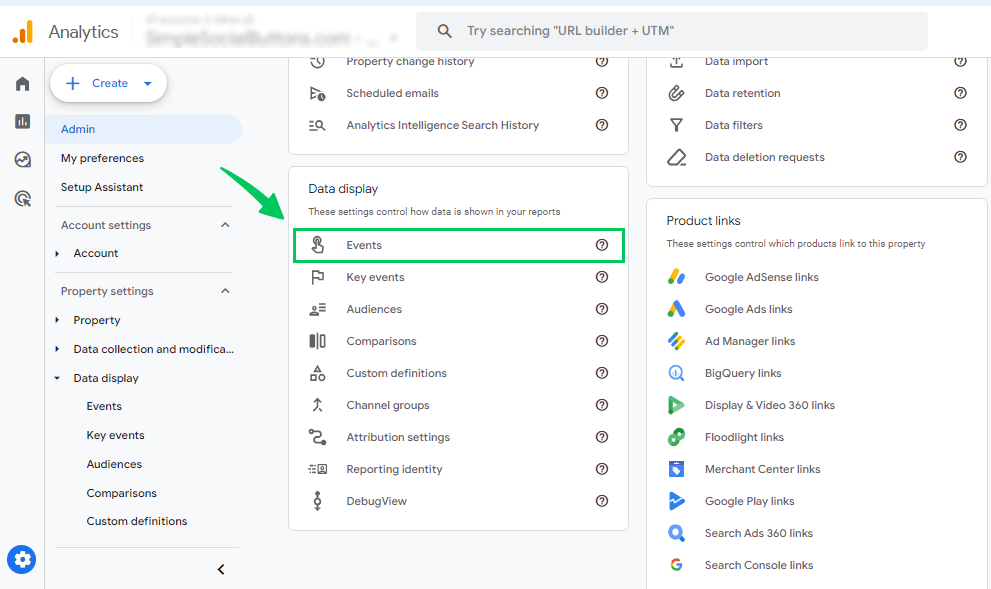
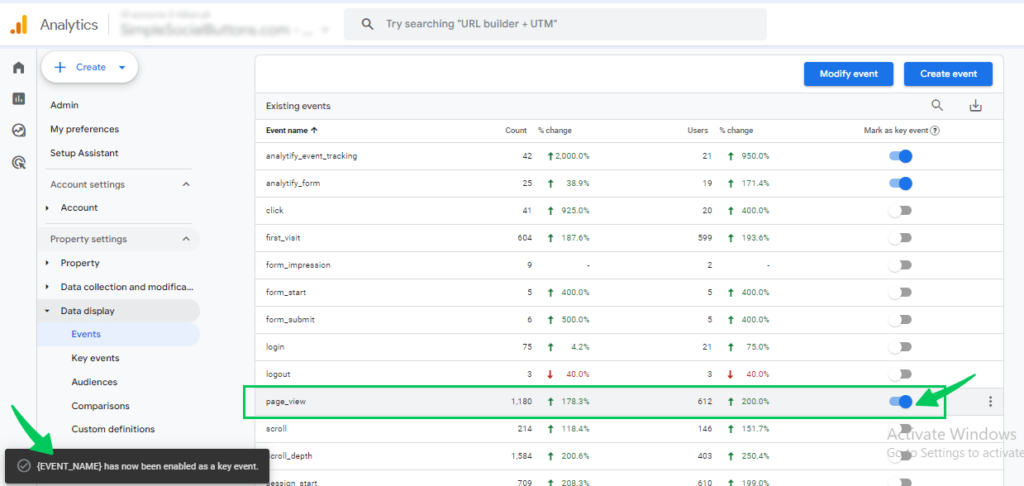
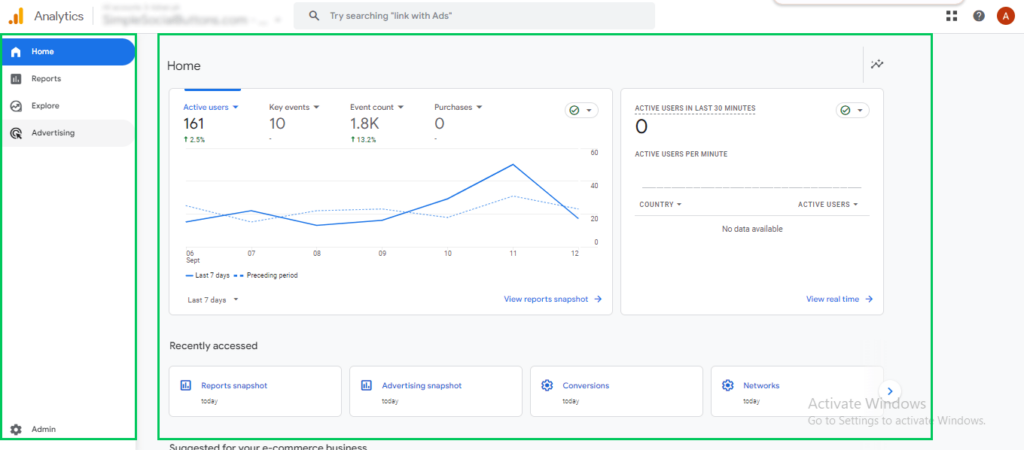

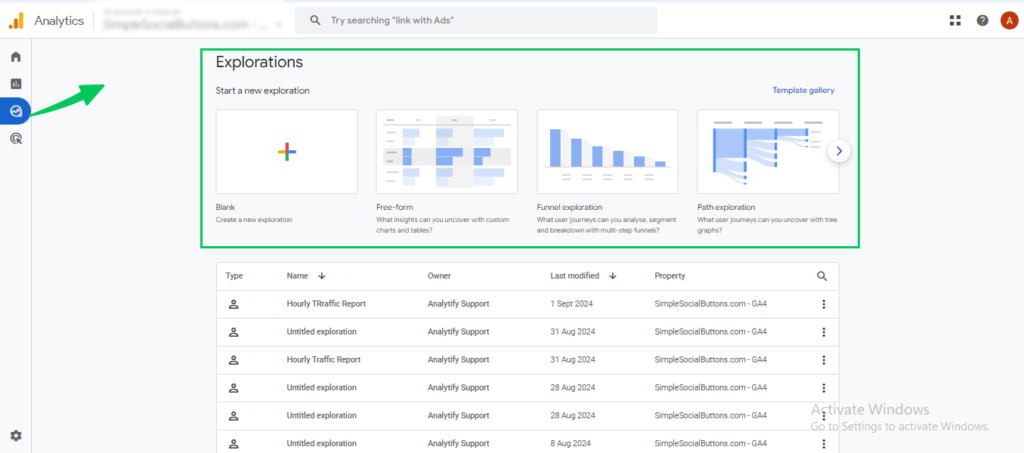


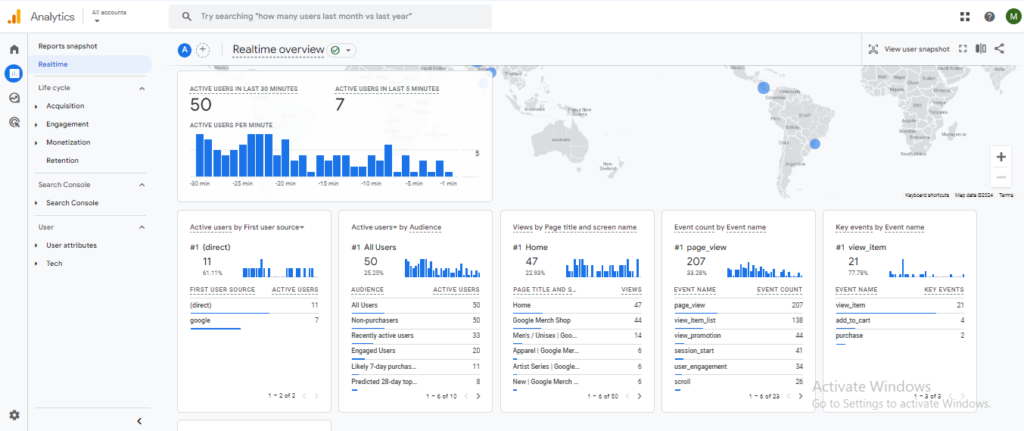

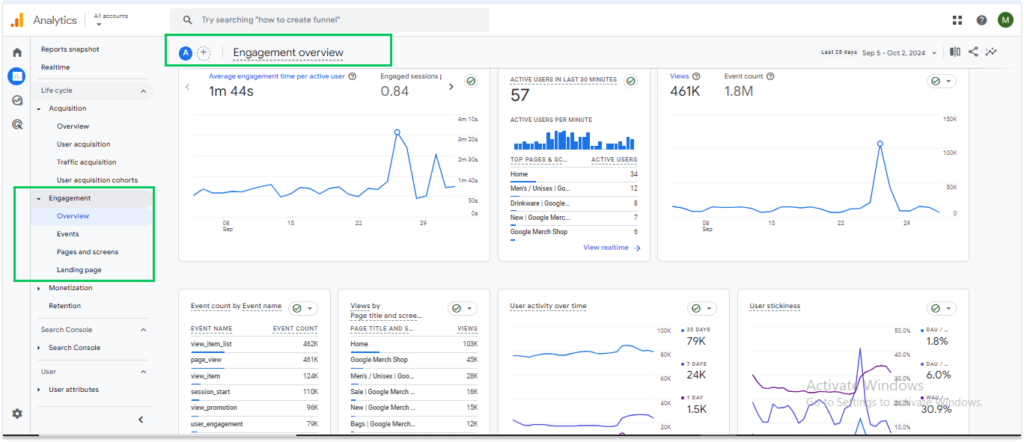



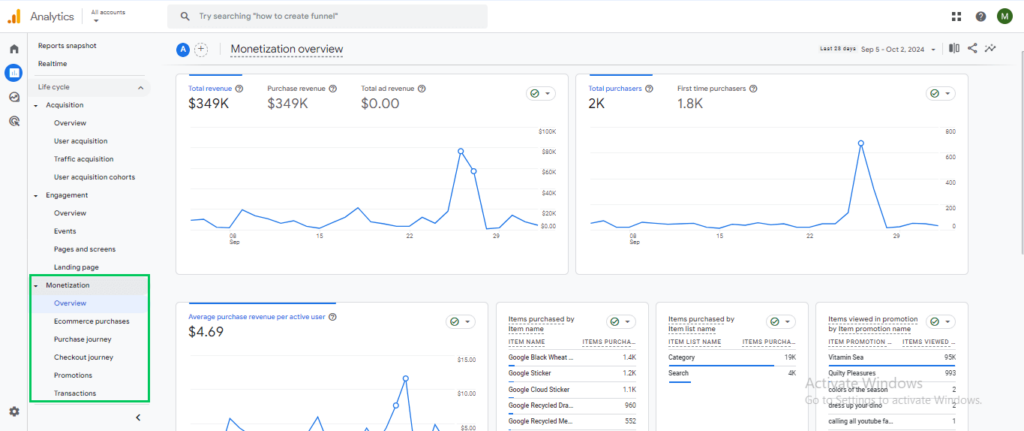



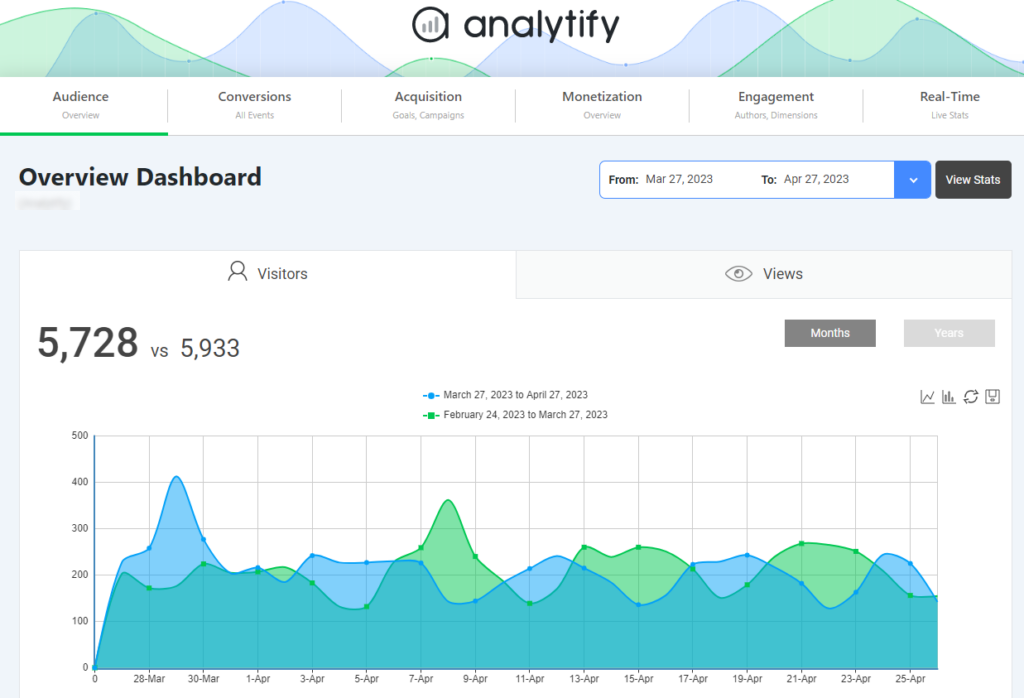

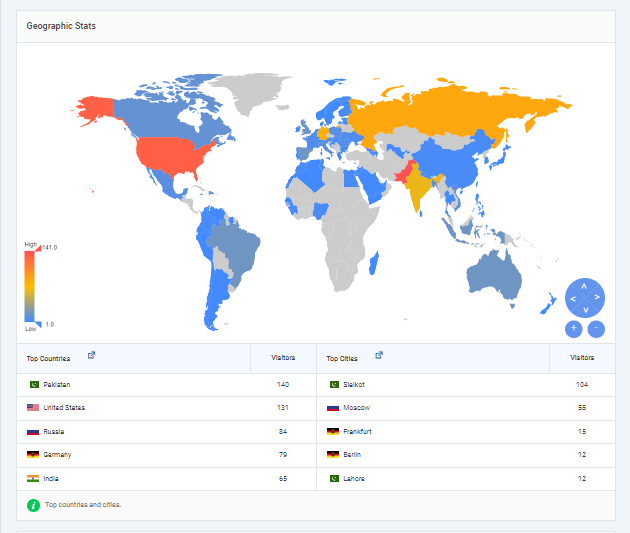
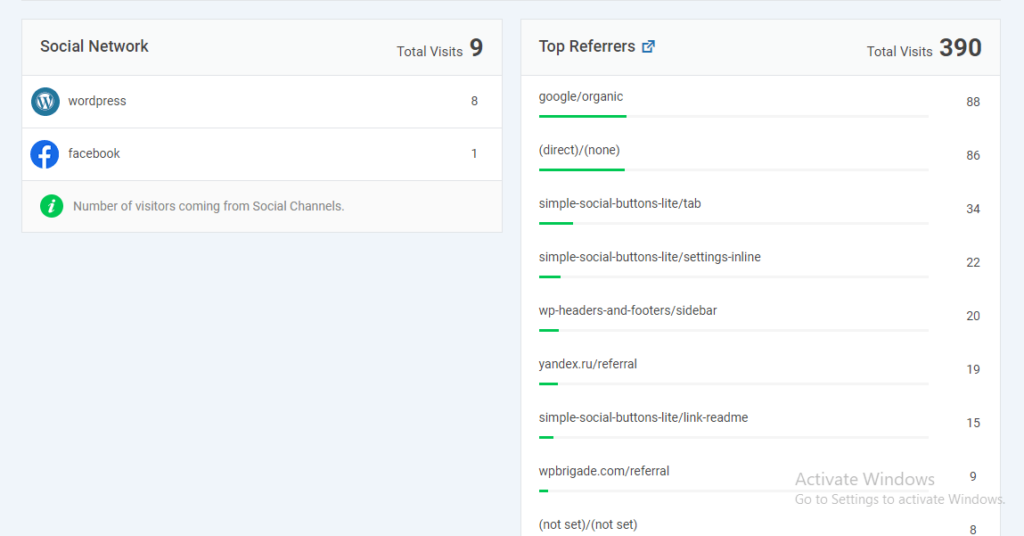
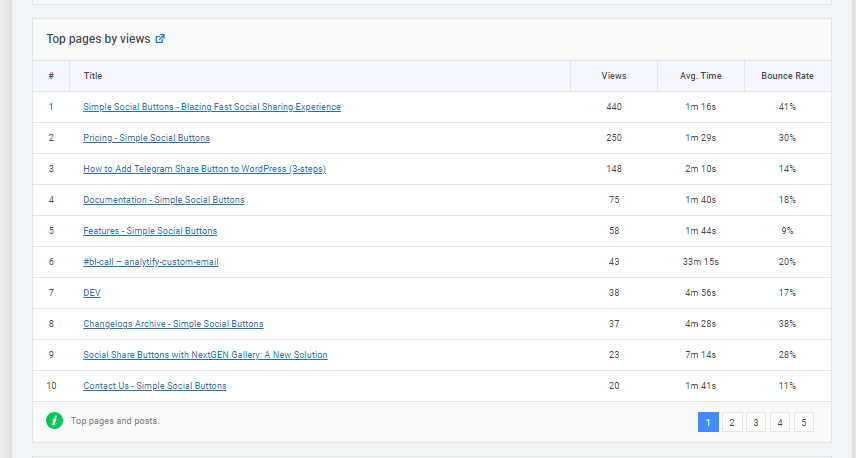
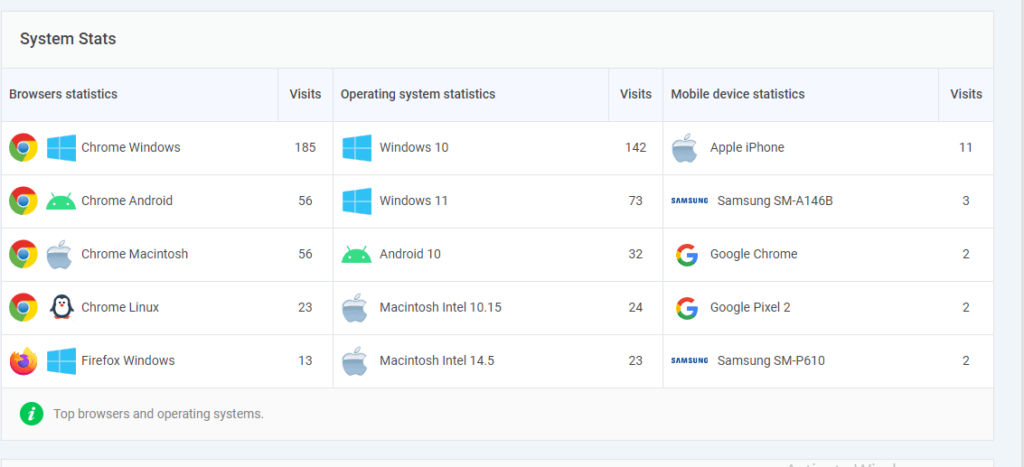

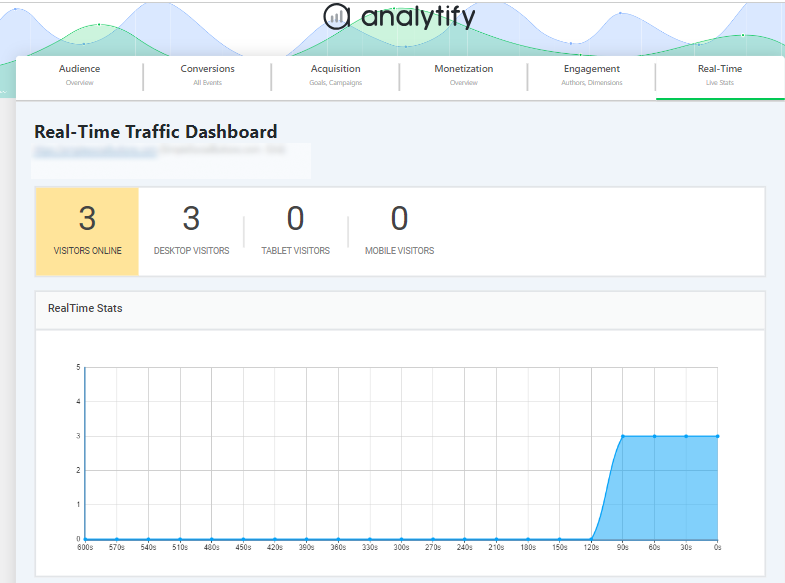


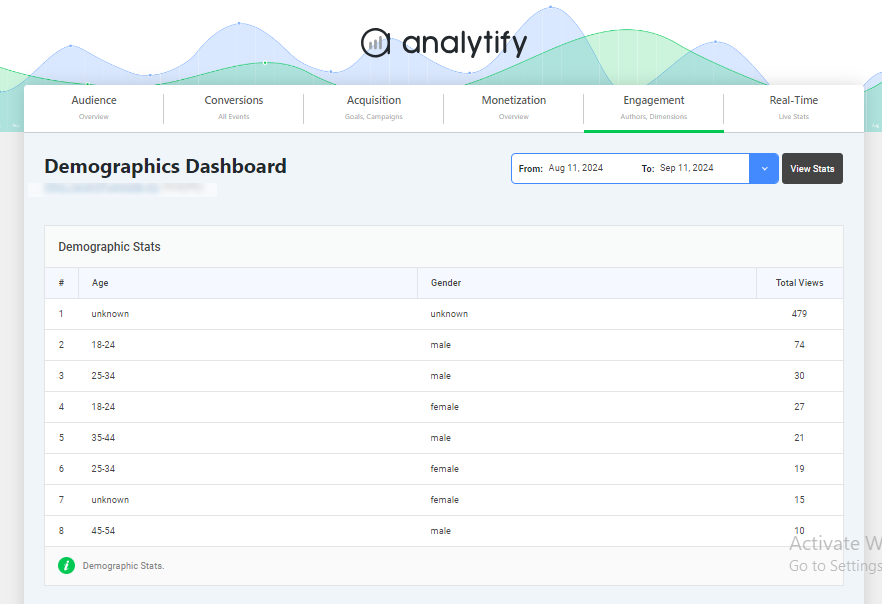
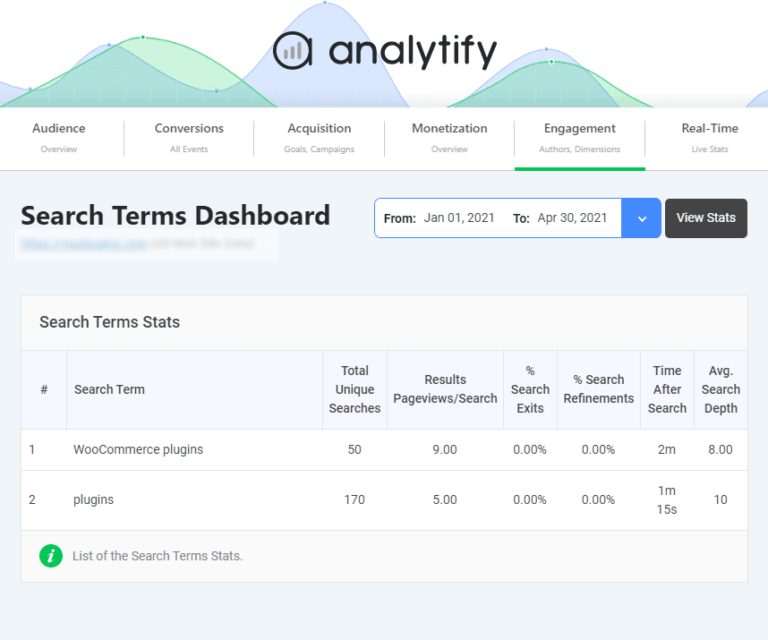
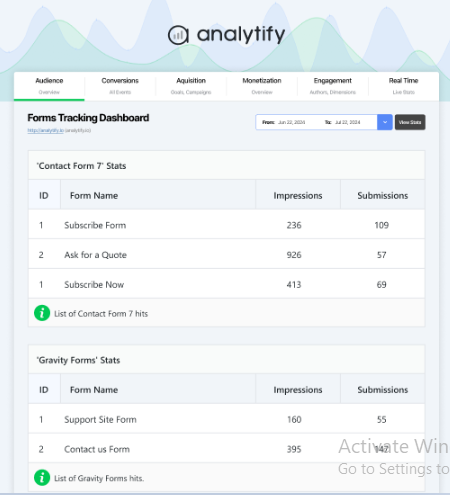





Thanks a lot for sharing the blog. the information you shared is just awesome and very helpful.
Finally, something concrete about Google Analytics, thanks for your share Zainab.
Thank you for sharing the awesome article with us. that’s very useful. Provides much-needed knowledge.
WOw this is a great thorough article on how to get the analytics set up in Google. I love search console as one of the most powerful tools to see what’s going on with your site. It’s amazing that more people don’t use it so they can make real improvements to their project.
Thank you for your appreciation.